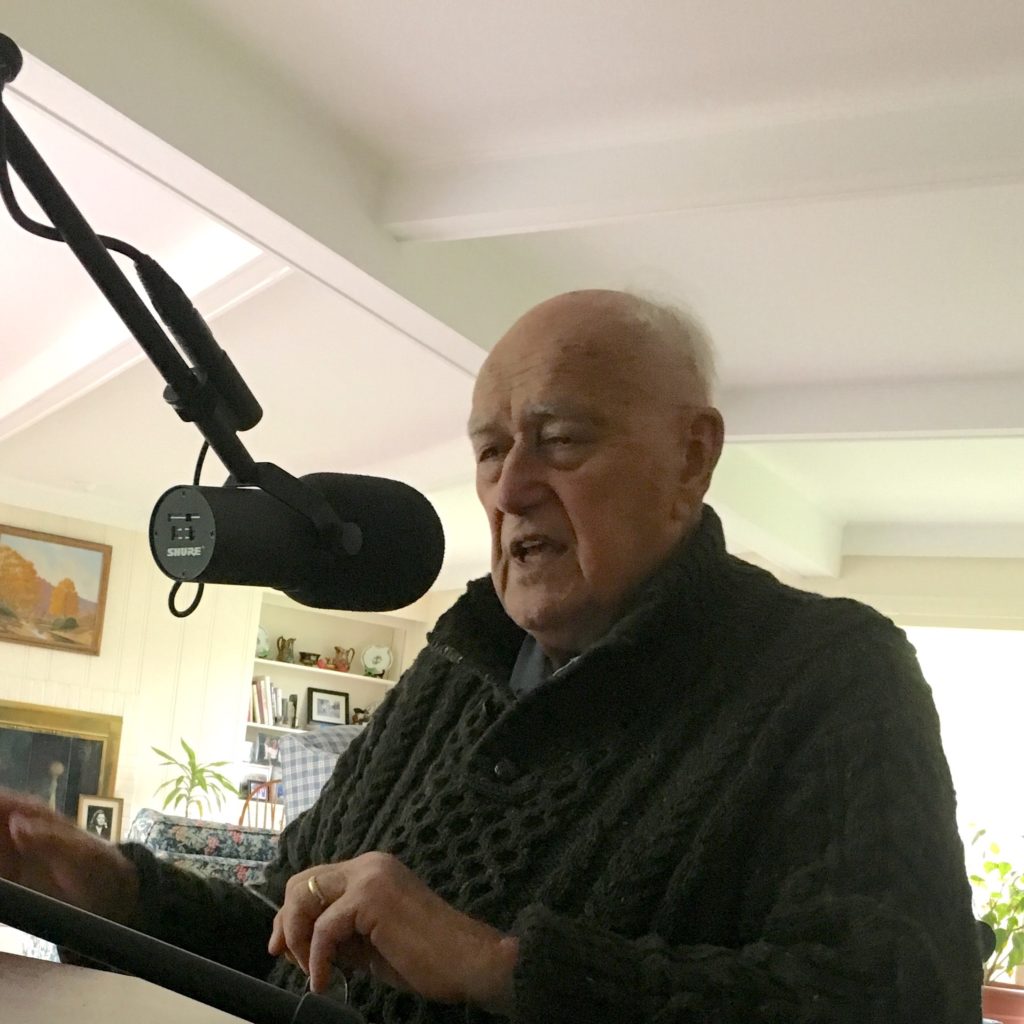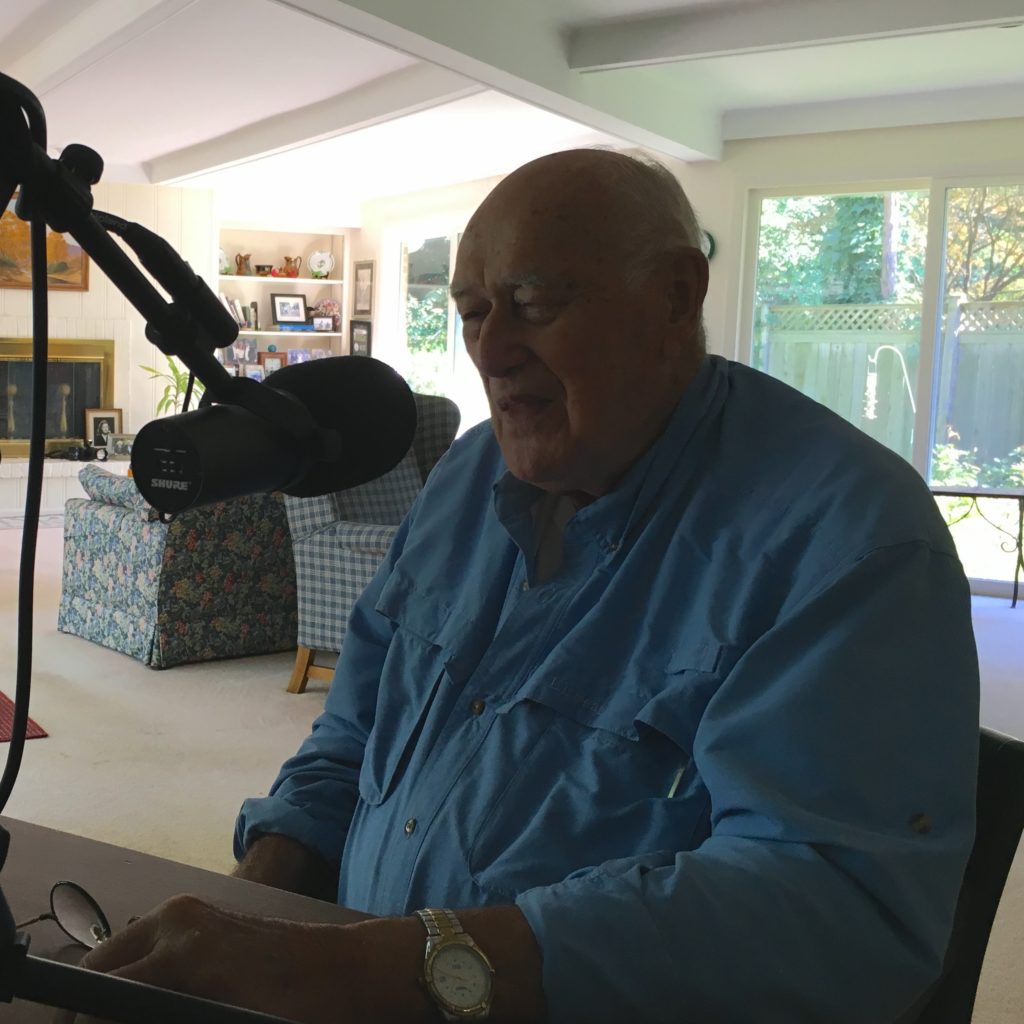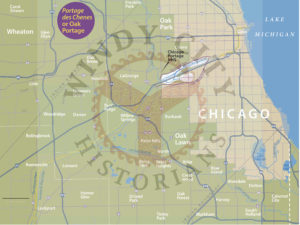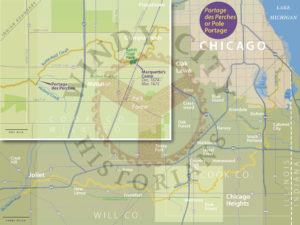Released Friday, March 29, 2019 – On the 344 Anniversary of Father Marquette getting flooded out of his winter camp in 1675, at the place the Indians called Chicaogua.
In real estate it’s all about “Location, Location, Location.” So what happens if our Chicago isn’t really in Chicago? Jacques Marquette and Louis Jolliet explored a land that Native Americans called “Chicagoua” in 1673 and left clues to where this place can be found. It took historian John Swenson over three decades to unravel the mystery of the location of Chicago, and the evidence he found – remarkably – calls into question the story told by most 19th century historians.
This first episode chronicles a brand new history for Chicago as co-hosts Chris Lynch and Patrick McBriarty talk with John Swenson sharing a new spin on the European discovery of the Windy City. You will hear his story of digging into original French manuscripts, early maps, and travel accounts to determine Marquette and Jolliet were not the first western Europeans to the Chicago area. It is the first of a new and fascinating origin story of this place we call Chicago, in two parts.


“Cheagoumema” or “False-Chicago”
The map to the left illustrates the Northern Chicago Portage Route from Lake Michigan to the Chicago River to Mud Lake and portage to the easterly bend in the Des Plaines and Illinois Rivers. This is “Cheagoumema.”
“Makarigemou” or Crooked River and the “River Chekago”
The map at right illustrates the Southern Chicago Portage Route from Lake Michigan to the Calumet and Little Calumet Rivers to Butterfield Creek and portage to Hickory Creek to the Des Plaines and Illinois Rivers. This is what early French explorers referred to as the Chicago River.
Links to Research & History Documents
In this first Episode – Who Was First? John Swenson makes reference to a variety of historic documents and sources and we offer links below in the order in which they are mentioned. Please note in 17th Century French the “t” is pronounced as with “Jolliet” and “Nicolet,” while French pronunciations today the “t” is not usually enunciated.
- The Taunton Map of Nouvelle France
- The 1632 Maps of Samuel Champlain (1567 – 1635)
- Henri Joutel (c. 1643 – c. 1745) accounts from the La Salle Expedition of 1684-1688:
- A Journal of the Last Voyage Preform’d by Monfr. de la Salle, written in French by Monsieur Joutel, translated by Melville B. Anderson, 1896, “visits Chicago,” p. 178-79.
- Murder of “La Salle” or Rene-Robert Cavelier, Sieur de La Salle near Nacogdoches, Texas in Joutel’s journal of La Salle’s last voyage, 1684-1687, Appleton P.C. Griffin (1906) p. 150.
- Isosavage or Ramps or as the French called it “wild-garlic”
- John Swenson’s article on the etymology of Chicago
- Jean Baptiste Point de Sable, Chicago’s first non-native settler
- Taunton Map of c. 1640
- Robert Hall citation only:
- “Rethinking Jean Nicolet’s Route to the Ho-Chunks in 1634,” by Robert Hall in Theory, Method, and Practice in Modern Archaeology, edited by Robert J. Jeske and Douglas K. Charles, Praeger (2003), Westport, Connecticut, pp. 238-251.
- Index to Jesuit Relations



Cool podcast. Can I get this on iTunes?
Jack,
I hope to have this on iTunes and several other platforms soon after we release the first episode. Still working out the technical details. Thanks so much for checking us out.
Patrick
Jack,
Wanted to let you know the Windy City Historians Podcast is now available on iTunes and Stitcher. Happy listening!
Patrick
I’ve heard the story that the Chicago River’s history might not be what is “well known” . I volunteer at the Chicago History Museum and next time I wander upstairs, I think I’ll ask one of their history folks about this. I now wonder how professional historians handle such things.
Interesting podcast. Well done.
I re-listened to the podcast and at about the 37:40 minute mark a comment is made that one can see the Des Plaines River from where the Chicago River met Lake Michigan. In other words from today’s Michigan Ave and Wacker (ish), where the Chicago River once made a southward bend a few blocks, one can see to about Harlem Ave (ish). That’s a head scratcher to me. Might be a minor point, but that’s quite a long distance to see anything along flat terrain.
That said there seems to be evidence that the Calumet River was “the place” rather than the Chicago River and Nicolet was in the area well before Marquette and Joliet.
Dave,
I agree with you it is a bit of a “head scratcher” however it very nicely makes the point of the northern route, as Swenson calls it, is extremely flat. A 5 to 10 foot or less change in elevation across that 13 mile portage route. Thanks so much for listening and appreciate your comments.
Patrick
You guys just blew me away with the truth that LaSalle never crossed at Michigan Ave. Wow! So ready to hear more! Thanks for all the research and bringing the knowledge and expertise of John Swenson to the table! Very enjoyable!
I’m not sure what to do when I cross Michigan Ave….. I shall have to remain silent! 😆
Thanks Michelle!
So glad you enjoyed the first Episode and we appreciate all the positive feedback! Hope you enjoy more Episodes and we expect to continue releasing a new episodes the last Friday of each month.
Cheers,
Patrick
Finally, eight months later, I listened to the first episode. First, so sorry to hear you put ketchup on your hot dogs, Patrick. Second, amazing work. Now that I have put the boat away (on the Calumet River) I look forward to catching up.
Thanks so much for listening. And yes! I like ketchup on my dog, and never understood the mustard only thing in Chicago. Oh well, hope you enjoy the next six episodes and counting!
Excellent opening salvo for your podcast. I’m sorry I’ve only recently discovered this. I do have both of your books however, along with about 100 more that may require an update. Thank you for what you do. Great work. I’ll be bingeing Windy City Historians for the next couple days.
Bart — thanks so much for listening and your kind words. Hope you continue to enjoy the podcast and the next episode “A Brewing City” will be released at the end of this month.
Thanks for some thought provoking stuff, Interesting that the Irving Rd portage gets no mention. I would thing there would be many of these points where native americans crossed from the Des Plaines valley to the lake and they were used a transport routes not necessarily population hubs. What a time it must have been.
OMG where have I been This podcast has opened my eyes. I am Robert Busch who has studied the History of Palos for fifty years. I grew up on legends of French Forts and Indian battles all around the Cal-Sag region. I have read almost everything mentioned in the podcast but was never able to put into words what i heard today. What I do know is that every bit of original writings about the Chicago portage of Marquette and Lasalle including that written by them can be applied to a calumet portage. The mud lake route came to extensive use long after they were dead and gone. I even have pictures of what could be Lasalle’s portage earthworks. But nobody seems to want to go out on a professional limb to explore the ruins.